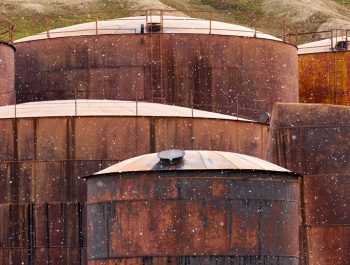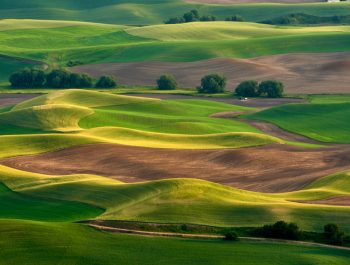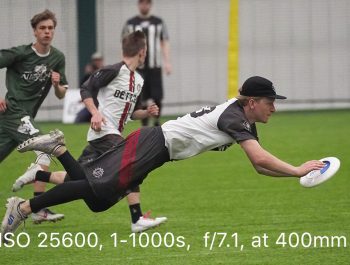Walrus At Storoya, Svalbard
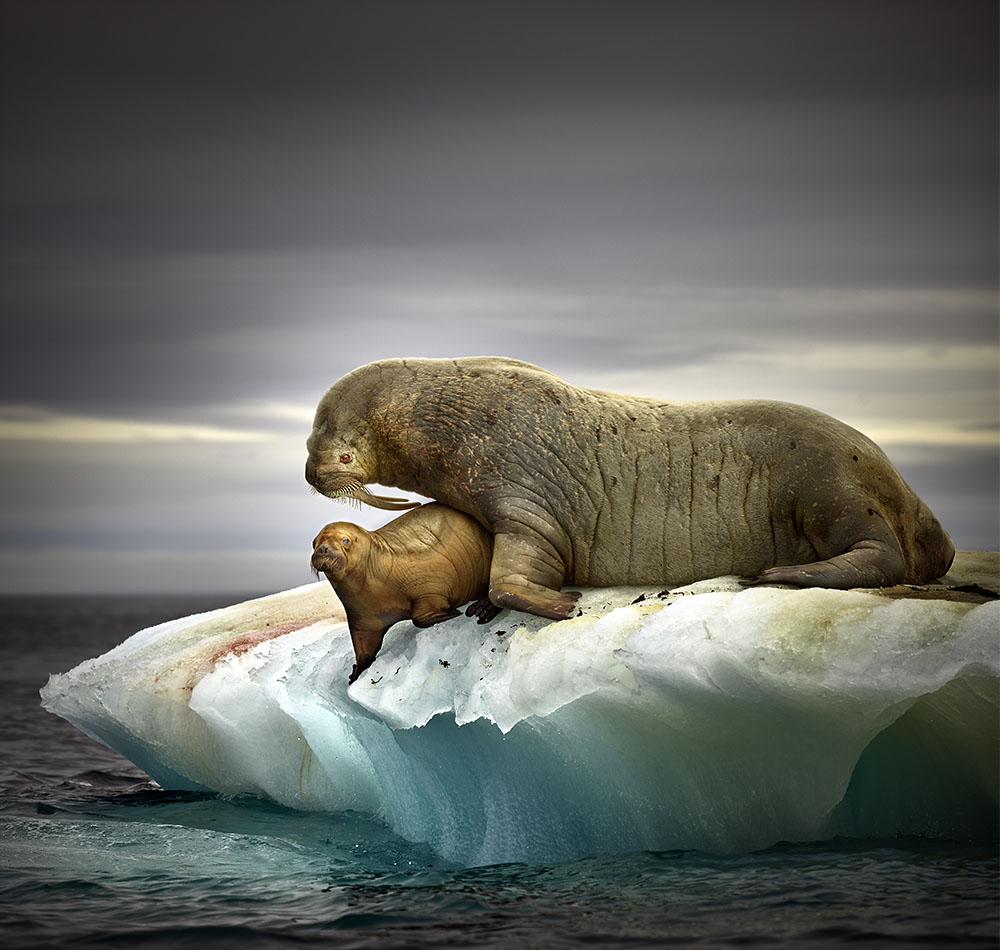
Peter Eastway and Kevin Raber took a Rockhopper photography workshop to Svalbard in 2018. Leaving from Longyearbyen on the Sea Endurance, the 10-day voyage searches the archipelago for polar bears, walrus, and birdlife, subject to the prevailing weather conditions and sea ice.
Two of the photographs taken on this voyage helped earn Peter the title of 2019 AIPP NSW Epson Professional Photographer of the Year back in Australia, and one of them, a walrus and her pup at Storoya, also won the highest scoring print of the awards. We asked Peter if he’d share how the image was taken and processed.
“Every time I go to the Arctic, it’s different”, said Peter. “And even when you return to a location, different weather, different ice conditions and different wildlife can transform the adventure.
“Before this trip, I’d never really been up close and personal with a walrus. They’d be way off in the distance or taking a break from their favorite beach, but on this voyage, we had a surfeit of walrus encounters.
“We were taking a zodiac cruise just off the coast of Storoya when we spotted an iceberg in the distance with some odd-looking lumps on top. Our guide through her binoculars saw they were walruses and so we slowed right down and edged our way towards them. They were magnificent and we had a chance to circle around them for quite a few minutes.
“However, something spooked them and they quickly vacated the iceberg. This shot was taken just when the mother appeared to be instructing her pup that it was time to take a dive.”
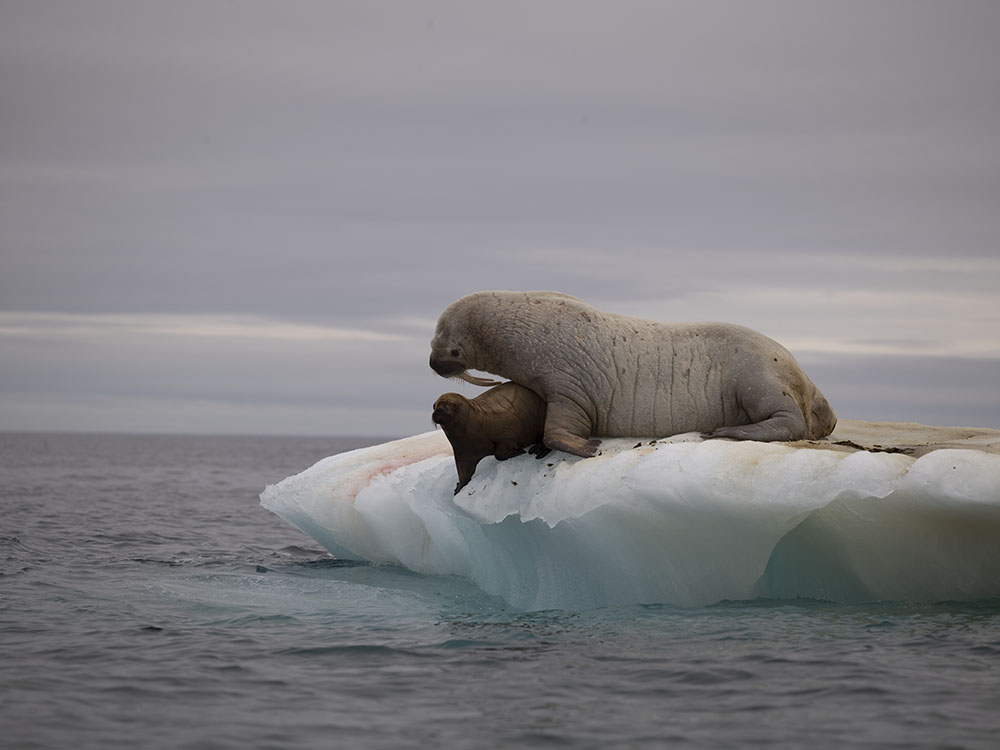
The photograph was shot with a medium format Phase One XF, an IQ3 100MP Trichromatic back and a 240mm Schneider Krueznach lens.
“This is not the ideal outfit for shooting wildlife, but there are so many great wildlife photographers shooting amazing images with DSLR and mirrorless cameras that I felt I needed a point of difference. I also had a Fujifilm X-T3 with me and, with its 100-400mm and 200mm f2.0 lenses, I could much more easily capture wildlife action. However, unlike the millions of birds flying around, walrus and polar bears are generally quite easy to follow and, as long as the 240mm on the Phase One is long enough (it’s the equivalent of a 150mm on a full-frame DSLR), the resulting quality is outstanding.
“I’d just put my X-T3 down and picked up the Phase because I decided to shoot the walruses in their environment. I wanted to be able to capture all the tonal nuances in the ice and clouds, as well as in the beasts – and nothing beats medium format. I pushed the ISO up to 100 so I could shoot at around 1/1000 second at f5.6 – this frame was shot at 1/800 second on aperture-priority exposure mode.”
For the AIPP professional awards, no cloning or compositing is allowed in the nature category and exposure and tonal adjustments must retain the integrity of the subject – but dodging and burning in are allowed. As you can see from the raw file, the light appears flat and overcast, but that’s not what Peter remembers.
“Cameras have a tendency to flatten out the tonality unless you’re using a subject mode or filter to lift them up. I’m used to seeing the raw files out of my Phase One back looking a little ordinary, but once I start processing them, I know there is a wealth of tone and color, just waiting to come out.”
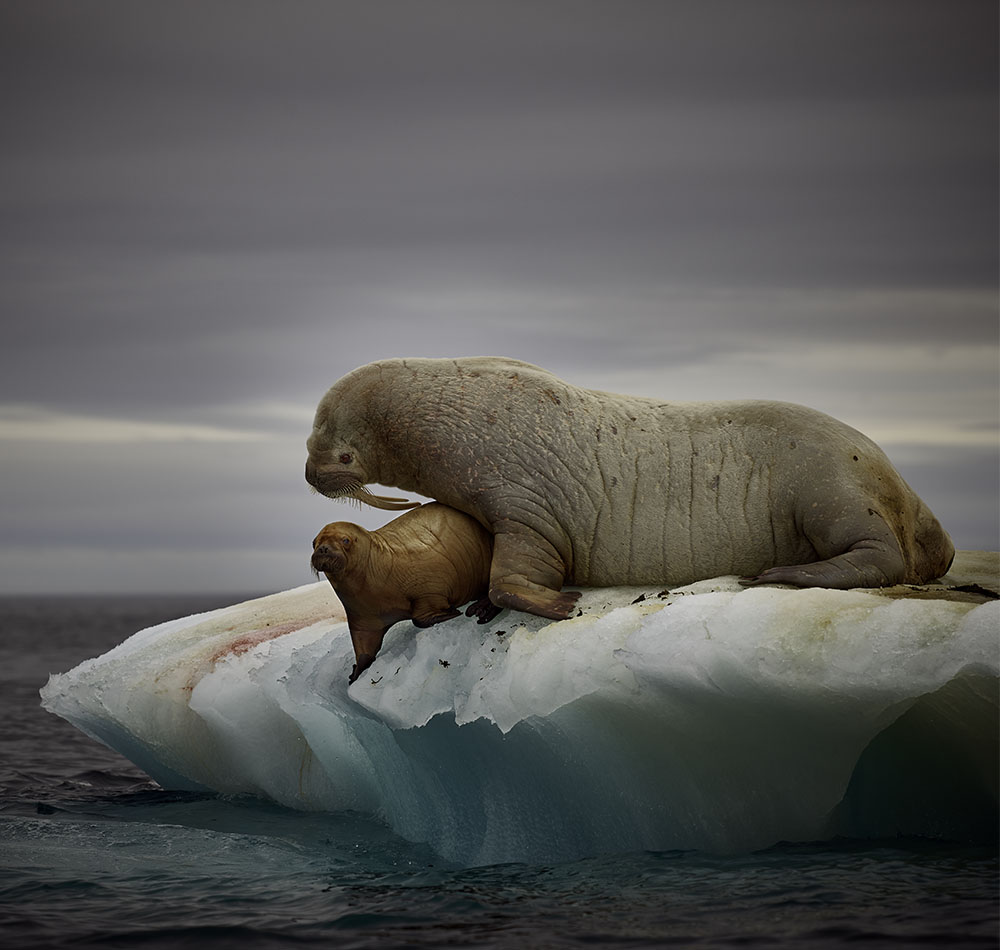
You can see five steps here, from the raw file through to the final rendition. After processing the file in Capture One, the file was taken into Photoshop and 20 adjustment layers were used to refine the tonality – all curve and brightness/contrast adjustments. No hue/saturation adjustments were needed – all the color is in the original file and could be coaxed out with the correct exposure (tonal adjustment).
“My approach is to flatten out the tonality of the image overall and then to lighten up and add contrast to the areas that are the most important. Many of the adjustments will be difficult to see on this small reproduction, but they included highlighting the faces and limbs, lifting up the ice below the water, and lightening up the pup who was otherwise in the shadow of its mum.
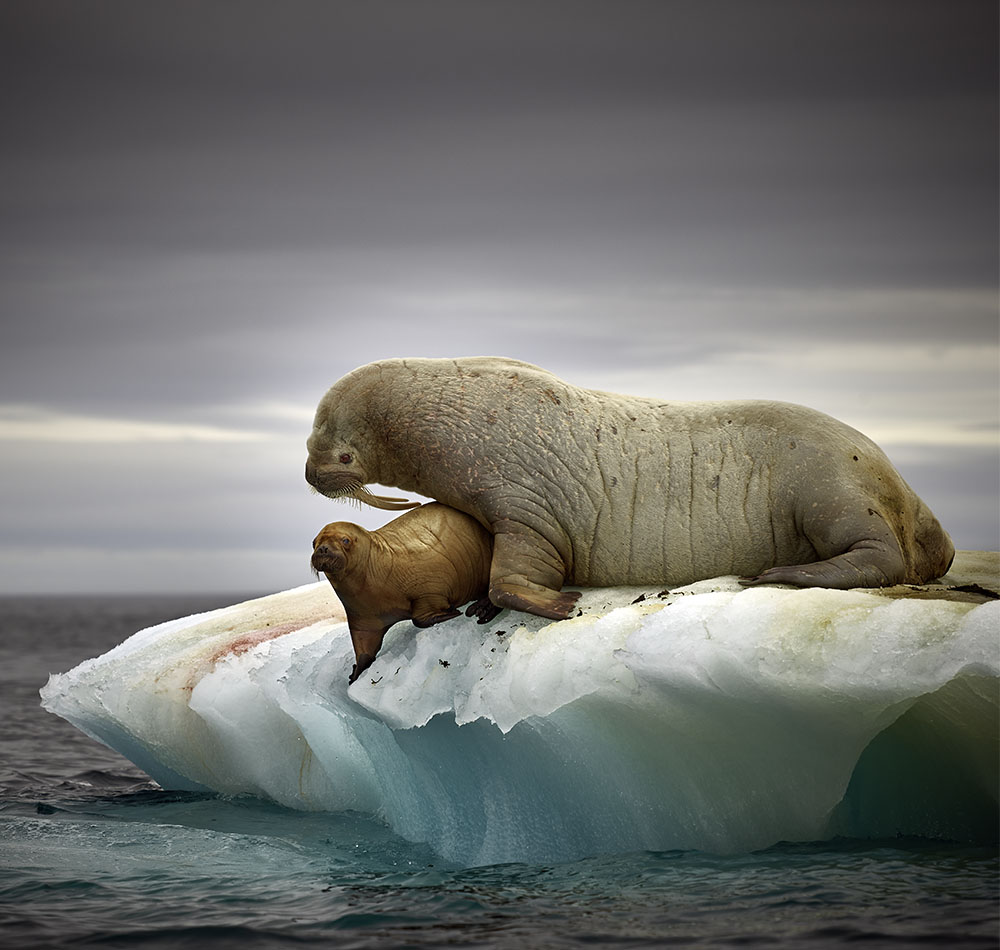
“To edit properly, you need a good quality screen and I use EIZO monitors. Similarly, when you produce a print, you need great equipment and materials. I used an Epson SureColor P10070 and Canson Platine and Rag Photographique papers.” [Disclosure: Peter is an EIZO, Epson and Canson Ambassador in Australia.]
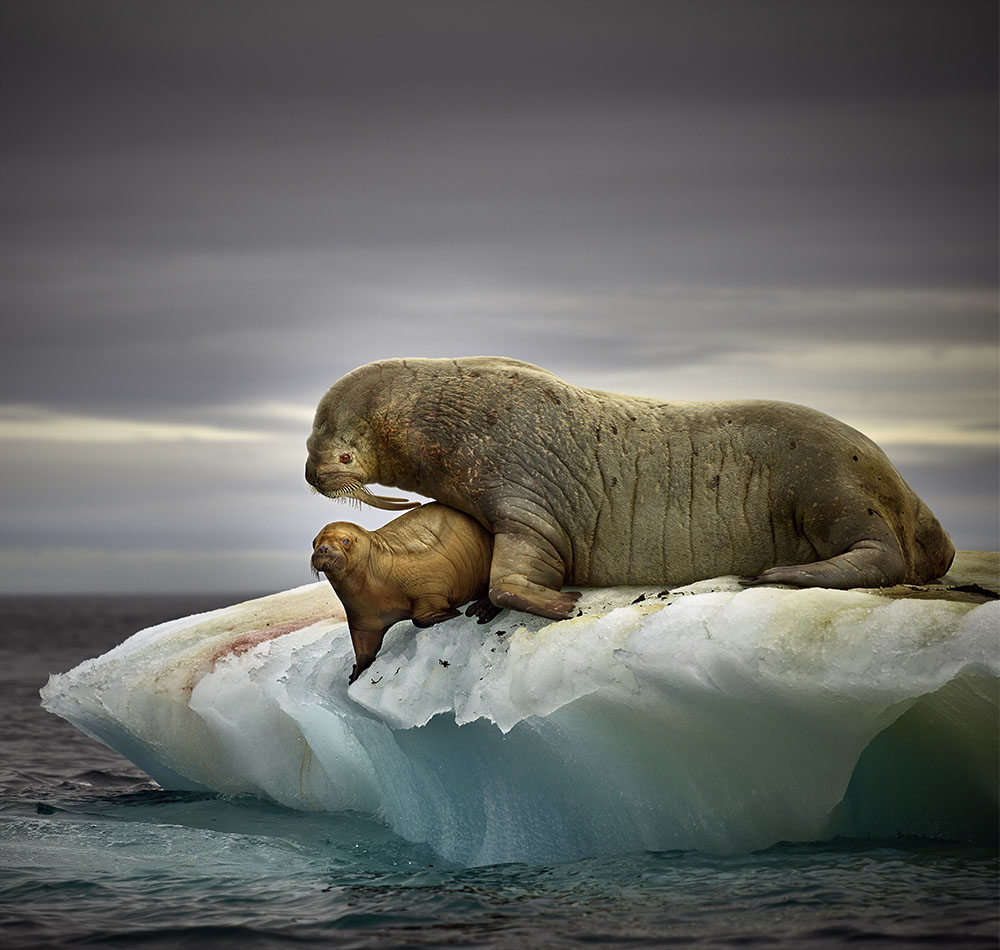
“Winning the award was very satisfying, but you have to be a realist about photography competitions and awards. While you can put your best work in, you have no control over how good the work of other photographers can be, so there is always an element of luck. Nevertheless, the benefit of entering awards is that it challenges you to do your best and that’s when you learn lots!

“I probably made 10 prints, all with minor adjustments before I was completely happy with the final image. And even now, I’m wondering if I should go back and crop it just a bit wider. Hmmm?”
You can see a YouTube video featuring the voyage with Peter and Kevin here
And if you’d like to join Peter and Kevin on their next Svalbard Voyage In August 2020, don’t delay as berths fill up really quickly. For full details, CLICK HERE:
Peter Eastway
July 2019
Sydney, New South Wales
Peter Eastway is an Australian photographer known internationally for his landscape photography and creative use of post-production. He has been involved in photo magazine publishing for over 30 years, establishing his Australia's Better Photography Magazine, in 1995. As a result, Peter and his websites are a wealth of information on how to capture, edit and print, offering tutorials, videos and inspiration for amateur and professional photographers. Peter was the author of the Lonely Planet’s Guide to Landscape Photography. His photography has featured on the cover of the Lonely Planet’s guide to Australia, in articles in the Qantas inflight magazine, and in an international Apple television commercial. And he has worked with Phase One researching and promoting its high-end medium format cameras and Capture One raw processing software. He has also published The New Tradition, an anthology of 100 award winning images with accompanying techniques and discussions. He was one of the featured photographer in the first Tales By Light television series aired on the National Geographic Channel in Australia and produced in partnership with Canon Australia. It can currently be viewed on Netflix around the world. Peter Eastway is a Grand Master of Photography, a Fellow and an Honorary Fellow of the Australian Institute of Professional Photography, and a Master and Honorary Fellow of the New Zealand Institute of Professional Photography. He won the 1996 and 1998 AIPP Australian Professional Photographer of the Year Award. He is a WPPI Master of Photography. He was more recently the 2019 AIPP NSW Epson Professional Photographer of the Year (Australia). Peter is just over 60, rides a short surfboard, believes two skis are better than one, and in case you're buying him lunch, he is vegetarian.






